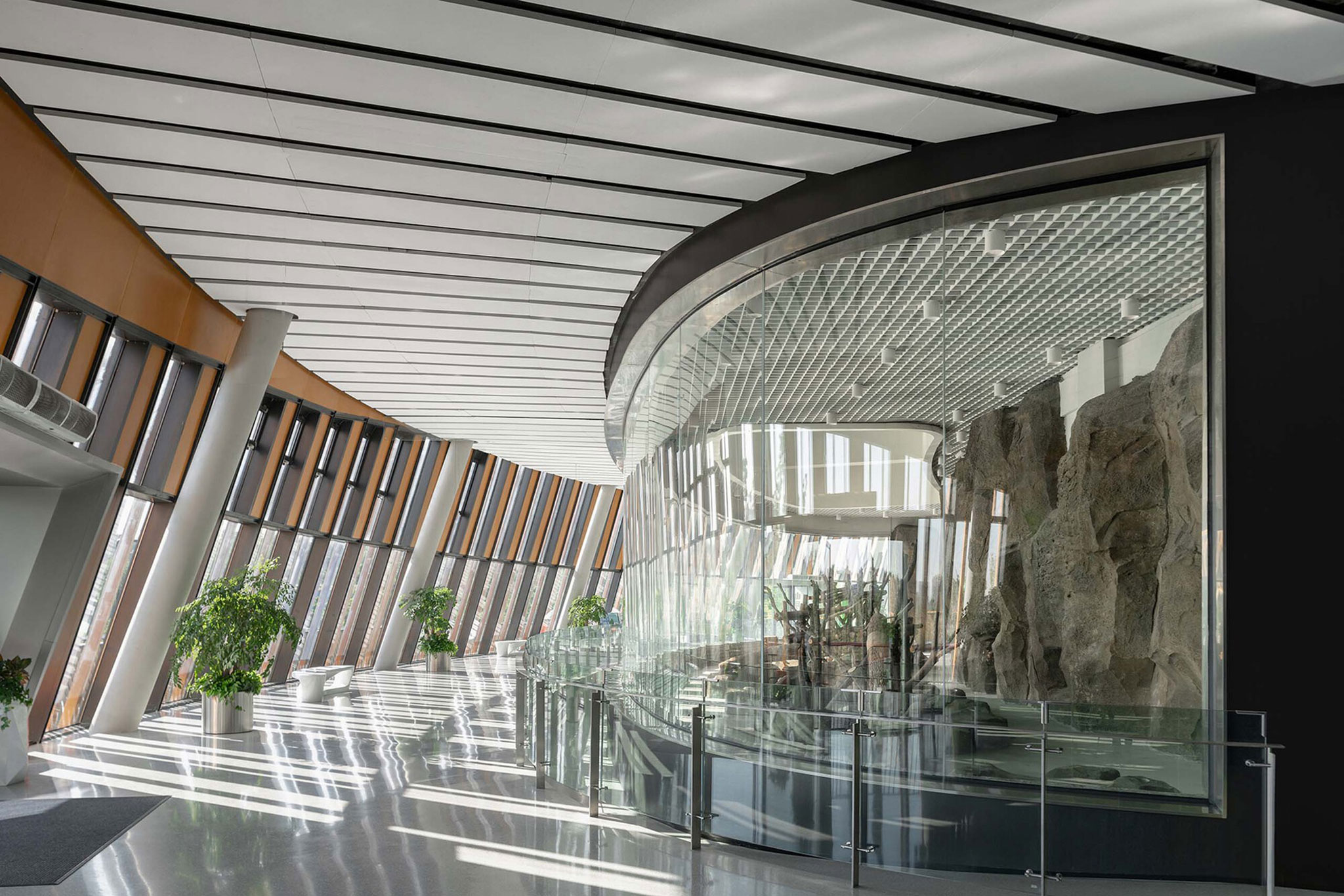The complex seeks a balanced integration between human experience, architecture and the environment, aiming to create a synthesis between architecture, landscape and land art. With this intention, although the project provides visitors with an attractive and relaxed tour, its main objective has been to prioritize an animal-friendly environment that minimizes the impact of their isolation outside of nature, generating a very well-kept semi-natural space.
The pavilion facades feature vertical articulations of wood-grained aluminium fins, reflecting the vertical rhythms of the surrounding bamboo grove. These buildings are organized into three zones: open, semi-open, and fully air-conditioned areas. Approximately 55% per cent of the building area adopted natural ventilation to lower the energy consumption and carbon footprint.


Four Panda Pavilions by Atelier Ping Jiang | EID Arch. Photograph by Kuratnik Nikolai.
Project description by Atelier Ping Jiang / EID Arch
Chengdu National Giant Panda Research and Breeding Center, the world’s leading research institute on panda preservation, has recently completed a significant campus expansion in a national preservation park near the outskirts of Chengdu, China. Designed by Ping Jiang, FAIA, of EID Architecture, a group of four panda pavilions has been newly opened to the public after experiencing some delay due to the Covid-19 pandemic. These pavilions are built to become the research lab to house and study pandas’ behaviors and activities. It also serves the community for educational and recreational purposes, while attracting millions of panda lovers annually to visit the campus.
The panda pavilions are devoted to fostering a cross-disciplinary collaboration as a care center for the giant pandas. The design is organized around four open-air circular courtyards which serve as an outdoor playground for the bears while providing a continuous connection with nature. Aimed at educating, entertaining, and inspiring a diverse audience from around China and across the world, the panda pavilions will bring a unique cultural experience that blends science, education, art, and entertainment.
"The design of the panda pavilions concerned with the integration of human experience, architecture, and environment. It is intended as a convergence of architecture, landscape, and land art. While the project provides a pedestrian-friendly navigation experience for the visitors, it prioritizes an animal-friendly environment to minimize the alienation of ecology, promoting biodiversity conservation."
Ping Jiang, FAIA, Design Principal


Four Panda Pavilions by Atelier Ping Jiang | EID Arch. Photograph by XIMUImage.
Inspired by the natural landscape of Chengdu’s prairies, these panda pavilions are conceived as a fusion of architecture and landscape. The four ring-shaped pavilions nestle into the park’s woodland slopes, enclosing terraced outdoor space for pandas. Connecting pathways and bermed viewing galleries provide visitors with varied vantage points for observing pandas at relatively close range, but always with physical boundaries separating panda space and human space.
Rising above the topography in places and sinking into it in others, the pavilions’ rings house panda indoor activity spaces and living quarters, along with staff administrative areas and support spaces such as rooms for preserving and storing the bamboo shoots that are central to the panda diet. In addition, the pavilions provide interactive exhibitions and educational spaces designated for panda research and preservation.

Four Panda Pavilions by Atelier Ping Jiang | EID Arch. Photograph by XIMUImage.
Integrating a habitat for the animals and a behavioural research lab for scientists, the panda pavilions are designed to create an immersive experience of exploration and discovery for the visitors. These pavilions embrace their natural surroundings, integrating themselves with the topography of the conservation base.
The pavilion facades feature vertical articulations of wood-grained aluminium fins, reflecting the vertical rhythms of the surrounding bamboo grove. These buildings are organized into three zones: open, semi-open, and fully air-conditioned areas. Approximately 55% per cent of the building area adopted natural ventilation to lower the energy consumption and carbon footprint, as a result, it contributed to creating a series of eco-friendly breathing architecture.

































































